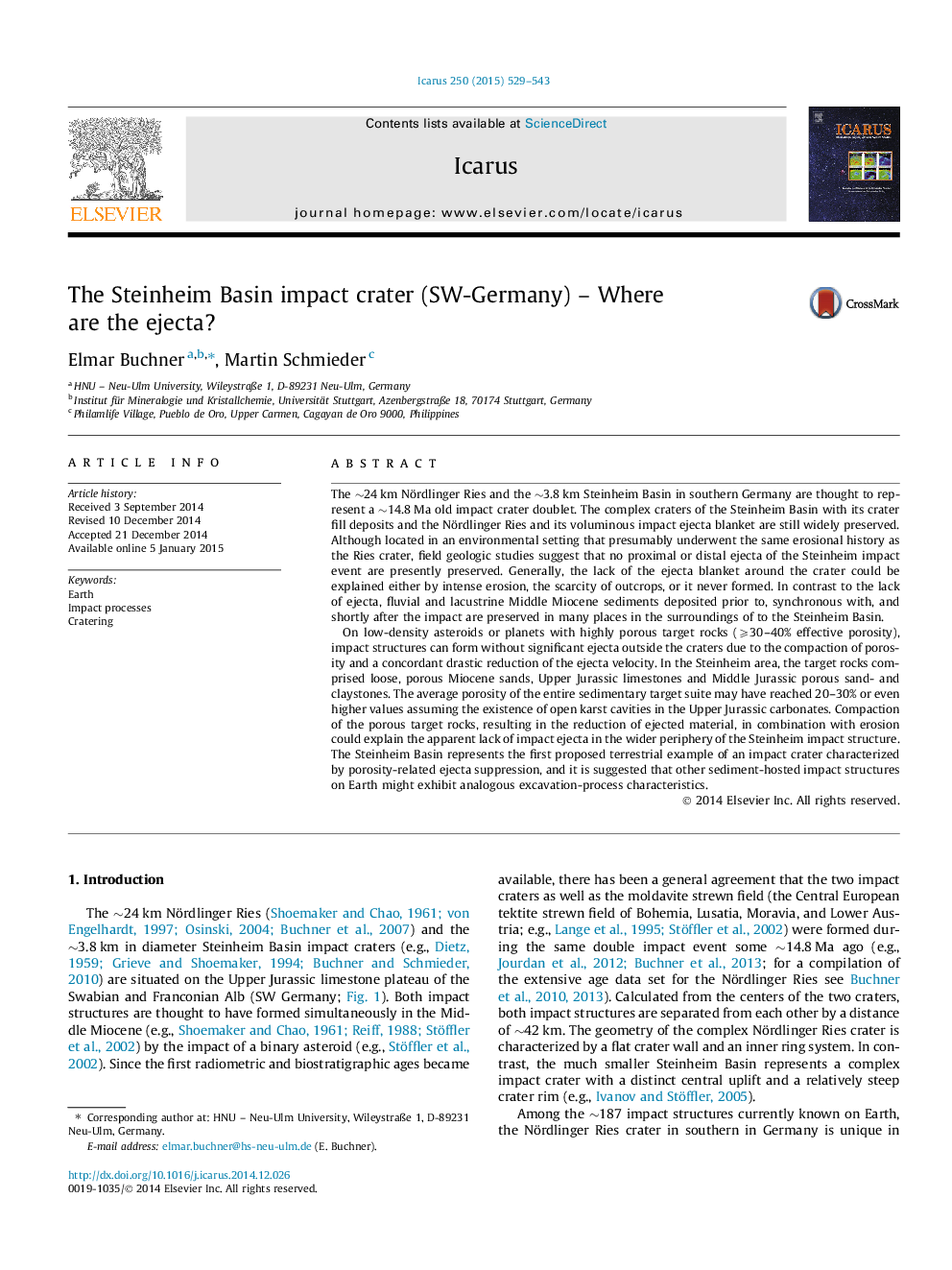| Article ID | Journal | Published Year | Pages | File Type |
|---|---|---|---|---|
| 8136963 | Icarus | 2015 | 15 Pages |
Abstract
On low-density asteroids or planets with highly porous target rocks (⩾30-40% effective porosity), impact structures can form without significant ejecta outside the craters due to the compaction of porosity and a concordant drastic reduction of the ejecta velocity. In the Steinheim area, the target rocks comprised loose, porous Miocene sands, Upper Jurassic limestones and Middle Jurassic porous sand- and claystones. The average porosity of the entire sedimentary target suite may have reached 20-30% or even higher values assuming the existence of open karst cavities in the Upper Jurassic carbonates. Compaction of the porous target rocks, resulting in the reduction of ejected material, in combination with erosion could explain the apparent lack of impact ejecta in the wider periphery of the Steinheim impact structure. The Steinheim Basin represents the first proposed terrestrial example of an impact crater characterized by porosity-related ejecta suppression, and it is suggested that other sediment-hosted impact structures on Earth might exhibit analogous excavation-process characteristics.
Keywords
Related Topics
Physical Sciences and Engineering
Earth and Planetary Sciences
Space and Planetary Science
Authors
Elmar Buchner, Martin Schmieder,
